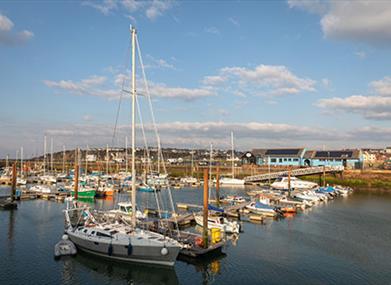- Accommodation
- What's On
- Things to Do
- Food and Drink
- Explore Cumbria
- Areas of Cumbria
- Towns & Villages
- Lakes of the Lake District
- Travel
- Year of the Coast
- Dark Sky Cumbria
- World Heritage Cumbria
- Access for all - Adventure for Everyone
- Historic Houses, Parks & Gardens
- Mountains and Fells
- Wainwrights
- The National Trust in the Lake District
- Cumbrian Castles
- Cumbrian Churches
- Harbours & Marinas
- Tourist Information Centres
- Ideas and Inspiration
- Starring Great Britain: The Lake District, Cumbria
- Lake District, Cumbria Bucket List
- Selfie Guide
- Suggested Itineraries
- Sunny day ideas
- Rainy day ideas
- Spa Breaks
- Romantic Breaks
- Family Holidays
- Dog Friendly Holidays
- Bespoke Holidays
- The Inn Collection Group in the Lake District
- Sustainable Stays
- Caring for the environment
- Live, Work and Study in The Lake District, Cumbria
- Weddings
- Conferences & Event Spaces
- Prizes & Guides
- Blog
- Plan your journey
- Special Offers
You are here: Home > Itinerary Planner
St Bees and Maryport Family Fun on the Heritage Coast

Discover St Bees. Towering red sandstone cliffs, a perfect sandy beach and a rich past – part of England’s only Heritage Coast between Scotland and Wales. Enjoy a walk round the Cumbrian coast on the towering cliffs of St Bees Head, taking in the largest sea bird colony in the North West (during spring and summer).
Then head up the coast to Maryport, a bustling harbour town with Roman roots. Discover its maritime past and enjoy a Roman ramble.
Alight at St Bees station and follow the road signposted “Beach”.
The dramatic cliffs of St Bees rise from the seafront and are the highest and most westerly point in Northern England, made up of vast slabs of red sandstone laid down some 240 million years ago. Home to an array of sea birds and wildlife, these cliffs will inspire you to use your coastal escape to explore.
Discover the legend of the Irish princess who fled across the Irish Sea to St Bees to avoid an enforced marriage, wonder at the carved stones in the priory left by Irish-Norse Vikings who settled in the area in the 10th century and marvel at the tale of St Bees Man. There is a wealth of history just waiting to be unwrapped.
Explore the promenade and beach and don’t forget to pop in to Hartley’s for an Ice-cream.
The four miles of St Bees Head’s stunning red sandstone cliffs is well worth the walk. It’s the source of St Bees’ sandstone – the red stone used for many buildings in Cumbria. The area is a RSPB nature reserve and provides nesting sites for more than 5,000 pairs of seabirds. It’s also famously home to England’s only colony of Black Guillemots.
Almost 100m in height, the towering cliffs are topped with grassland and patches of wild gorse, which also provide havens for a wide variety of small birds. Keep cameras and binoculars on standby for the Peregrine falcons that often hunt along the coast and can sometimes be seen flying overhead or perched on the cliff face.
Access to the reserve is via the path over the metal footbridge at the north end of the promenade. From here follow the coastal path to St Bees Head and back. Tread carefully, as this is an unprotected cliff-top route.
Catch the train to Maryport or spend a night in one of the pretty coastal villages along the way.
Arrive at Maryport station and head for the harbour. Here you will find the Maritime Museum and the Lake District Coast Aquarium, both well worth a browse.
The aquarium boasts 75+ themed tanks containing a collection of the diverse marine life found around the Cumbrian and UK coastline. The Sealab is home to juvenile species such as Rays & Cat Sharks and also houses a lobster breeding programme. This sees lobsters released back into the Solway once they are fully formed & healthy, to combat the low survival rate of Lobster larvae in the wild.
For lunch The Queyside Café at the Aquarium is well worth a visit
Walk off your lunch with a Roman themed ramble, starting at the Maritime Museum. This 3 mile walk climbs the sea brows, yielding spectacular views of the Solway Firth. The route meanders into the Solway Coasts Area of Outstanding Natural Beauty and takes in the Senhouse Roman Museum, which houses some of the most important archaeological finds in Europe and is sited near the Roman settlement of Alauna.
Head back to the train station, tired and somewhat more cultured! Use the train ride home to digest the amazing finds this quiet area of Cumbria has to offer.
Weather
The weather in the Lake District can change quickly, clear morning skies can rapidly give way to rain, sleet or even snow so be prepared! Changes in weather can dramatically alter the difficulty of a route so please consider this before setting off. Call 0844 846 2444 to check the forecast.
Practical information
Appropriate clothing can make all the difference. It is important to be warm, comfortable and dry when out exploring so make sure you have the appropriate kit and plenty of layers.
Your rucksack should hold everything needed and be carried comfortably. Have extra layers, a hat and gloves, enough food and drink, and a first aid kit. A compass, map and the knowledge to use them is invaluable.
Mobile phone reception isn’t always good in the Lake District. Leave details of your route and expected finish time with a buddy. If you are delayed please contact your buddy to let them know. This will prevent mountain rescue, a team of volunteers, being called out unnecessarily. If there is an emergency call 999, ask for Cumbria Police and give your location; an accurate grid reference is ideal.
Itinerary Items
| Item |
|---|
| 1 St Bees Village |
| 2 Maryport |
| 3 Lake District Coast Aquarium, Maryport |
| 4 Senhouse Roman Museum |
Product Information
St Bees Village
The cliffs at St Bees (named after St Bega) are dramatic, composed of striking red sandstone some over 300ft high. There is an RSPB nature reserve.
Maryport
A delightful unspoilt town with a proud maritime heritage reflected in its fine harbour, marina, maritime museum and summer maritime festivals.
Lake District Coast Aquarium, Maryport
Maryport
Award winning family attraction on historic Maryport harbourside. All day tickets for 70+ displays of local and tropical marine life include a free round of crazy golf! Cafe, Gift Shop, Bait & Tackle store, Radio control boats, Adventure Playground.
Senhouse Roman Museum
The Promenade, Maryport
Roman museum displaying the internationally significant collection of Romano-British altars, inscriptions and sculptures from the adjacent Roman fort and civilian settlement.
Itinerary Distances
| From | To | Distance * (metric) |
|---|---|---|
| St Bees Village (54.49195,-3.59011) | Maryport (54.71516,-3.49482) | 23.04 |
| Maryport (54.71516,-3.49482) | Lake District Coast Aquarium, Maryport (54.71518,-3.50281) | 0.46 |
| Lake District Coast Aquarium, Maryport (54.71518,-3.50281) | Senhouse Roman Museum (54.72118,-3.49576) | 0.73 |
| Total Distance * | 24.22 miles | |
| Estimated Journey Time | 47 minutes | |
* Approximate distance by road
Receive all the latest news, special offers and information from the Lake District, Cumbria
Cumbria Tourism, Windermere Road, Staveley, Kendal, Cumbria, LA8 9PL



 to add an item to your Itinerary basket.
to add an item to your Itinerary basket.






